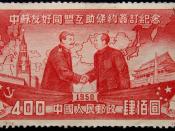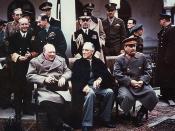During the post-war years of 1945-1949, the USSR adopted a policy of "sovietization" and set about its expansion into Eastern Europe, by creating Moscow-friendly satellite states. The USSR saw this as a purely defensive action, while the West saw this as evidence of Russia's expansionist nature. Hence, Soviet Union's move into Eastern Europe was much cause of the conflict between the West and Russia. One of the motivating forces behind Stalin's expansionist policy into Europe was that of overseas economic expansion. By this, we mean that one of Stalin's main reasons for creating satellite states in Eastern Europe was to ensure that he could have enough markets to trade with, and to ensure USSR's influence over the economies of the other countries. However, there are other more important factors dictating its policy towards Europe, like USSR's search for security.
Towards the end of World War Two, the Soviet Red Army swept through Eastern Europe as they liberated them from the Nazis.
However, the Red Army never left Eastern Europe. The need to restore law and order into these countries provided Stalin with the perfect excuse to station his troops there. This allowed Stalin to tighten his grip over the region later on, making it easier for him to exert the Soviet sphere of influence as the presence of the Red Army gave local communist parties a lot of support. These communist parties then went on to win rigged elections in their own countries. Also, after the war, there was a political vacuum in many countries in Eastern Europe. Their economies were shattered, so, to rebuild them, their governments followed the economic policies of the Soviet Union. The USSR took over all industry, and workers and farmers were told what to produce. As stated earlier on, one of the main factors...


